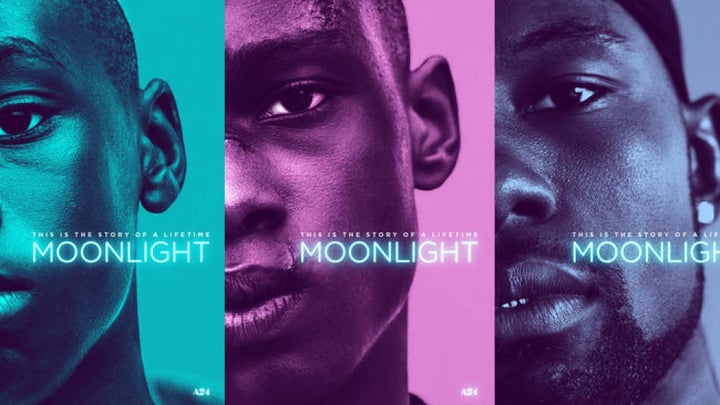
While the new film “Moonlight” tells the riveting coming-of-age story of a young, queer, Black man, it also serves as an artistic exposé about the oppressive school experiences of queer and non-gender conforming Black youth in our K-12 education system. Chiron, the protagonist, embarks into his teenage years in the midst of a drug-ridden, impoverished Miami neighborhood, where gang and community violence run rampant. In school, he endures merciless abuse and rejection, and his alienation and helplessness are telling of the price that many queer and gender-nonconforming Black youth pay to earn an education––particularly in inner-city, under-resourced schools.
According to a report by the Gay-Straight Alliance Network[1], 82 percent of LGBTQ+ (lesbian, gay, bisexual, and transgender) youth of color have been verbally harassed because of their sexual orientation, and 64 percent because of their gender expression. Thirty-eight percent have been physically harassed because of their sexual orientation, and 27 percent because of their gender expression. All of these staggering figures reflect Chiron’s reality.
Chiron eventually molds the teenage version of himself––scrawny and sensitive––into a “trap house” drug lord with a towering, Herculean physique and a confident swagger. On the surface, he evolves into the epitome of hypermasculinity; he grows harder and tougher as the plot unfolds. But deep down, he is not so desperate to fit in as he is to simply survive. Although he cloaks his vulnerability in an intimidating ruggedness, his personal ethics and values remain true to who he has always been at his core: a gentle and forgiving spirit who never allows anger to consume him despite every right to be cynical and bitter about the hand of cards that society has dealt him.
Chiron’s descent into the juvenile justice system marks the turning point in his life and his identity. This critical moment begins when Chiron’s high school expels him for retaliating––or, what some might consider defending himself, considering the circumstances––against Terrel, a classmate who terrorizes him. When Terrel and a gang of boys jump Chiron, knocking him unconscious in the school courtyard, the administration enforces no disciplinary action against the boys. Feeling helpless and betrayed by the school, Chiron explodes on Terrel, but faces consequences, even though Terrel is actually the abusive one.
Leading up to his expulsion, Chiron’s chemistry teacher––a young Black man––pretends not to notice when Terrel disrupts chemistry class, day in and day out, just to ostracize Chiron. He pretends not to overhear the class erupt in laughter after Terrel spews homophobic remarks and threats that humiliate Chiron. Each time, the teacher scolds Terrel for disrupting class and talking out of turn, co-signing Terrel’s vitriolic homophobia with his passivity and reluctance to condemn homophobia.
If one considers “Moonlight” to be the coming-of-age story of queer and gender non-conforming Black youth, then the lack of measures to address discriminatory bullying and the depoloticized approach that schools take to affirming and protecting LGBTQ+ students is the rite of passage in this narrative. The saddest part is that many educators who watch the film may not even realize these subtexts because Chiron does not fit their prototype of a juvenile preyed upon by the school-to-prison pipeline–––in other words, a cisgender, heterosexual Black boy. Sure, educators learn that the school-to-prison pipeline disproportionately affects children of color, and that LGBTQ+ students face bullying at alarming rates. But too often what they miss is the nuance of intersectionality. By and large, research and policy initiatives that concern juvenile justice focus myopically on the welfare of cisgender, heterosexual Black boys––as a function of patriarchy. Consequently, the overrepresentation of queer and gender non-conforming Black youth in the juvenile justice system is not on the radar of most educational practitioners, if they are even concerned about LGBTQ+ students at all.
Just like Chiron’s teacher, many educators turn a blind eye to homophobia so as not to seem controversial. But what they sweep under the rug increases the likelihood that LGBTQ+ students will attempt suicide, drop out, or get expelled. The stakes are even higher for queer and gender non-conforming Black youth. As for community-based programs and services that target LGBTQ+ youth and/or youth of color, queer Black boys like Chiron often have nowhere to turn for help because they are too Black for LGBTQ+ resources, and too queer for programs targeting Black youth. Schools are arguably the last type of public institution that is legally bound to promote the well-being of all children, yet they are falling short of this promise.
“Moonlight” forces us to ask the question: How will we, as activists, administrators, policymakers, researchers and teachers, foster affirming and loving learning spaces for queer and gender non-conforming Black youth? Are we willing to admit––even after graduate school or years in the field––that intersectionality might be a blind spot in our understanding of the racial achievement gap and the school-to-prison pipeline? Are we willing to fight for Chiron at a suspension or truancy hearing? To address the homophobia and transphobia of disruptive and intimidating students like Terrel? Are we willing to challenge the hidden curriculum of heteronormativity? To enforce stricter policies against discriminatory bullying? To advocate for disciplinary policies that are restorative and trauma-informed instead of punitive?
Do we have the courage to stand up against all of the injustices depicted in “Moonlight”, even when the system resists us?
[1] School-related experiences of LGBT Youth of Color: Findings from the 2003 National School Climate Survey. GLSEN, 2003.
